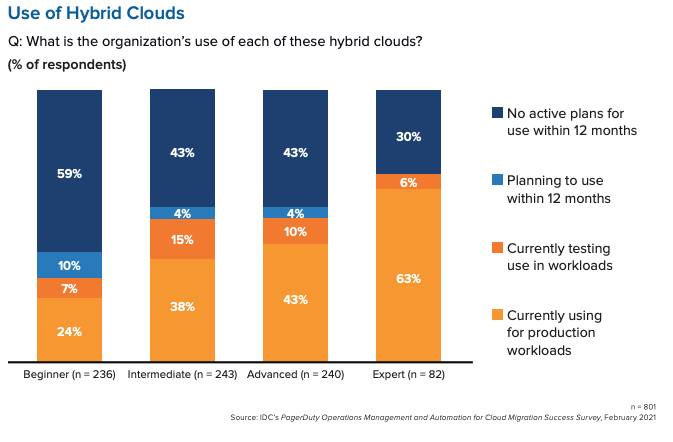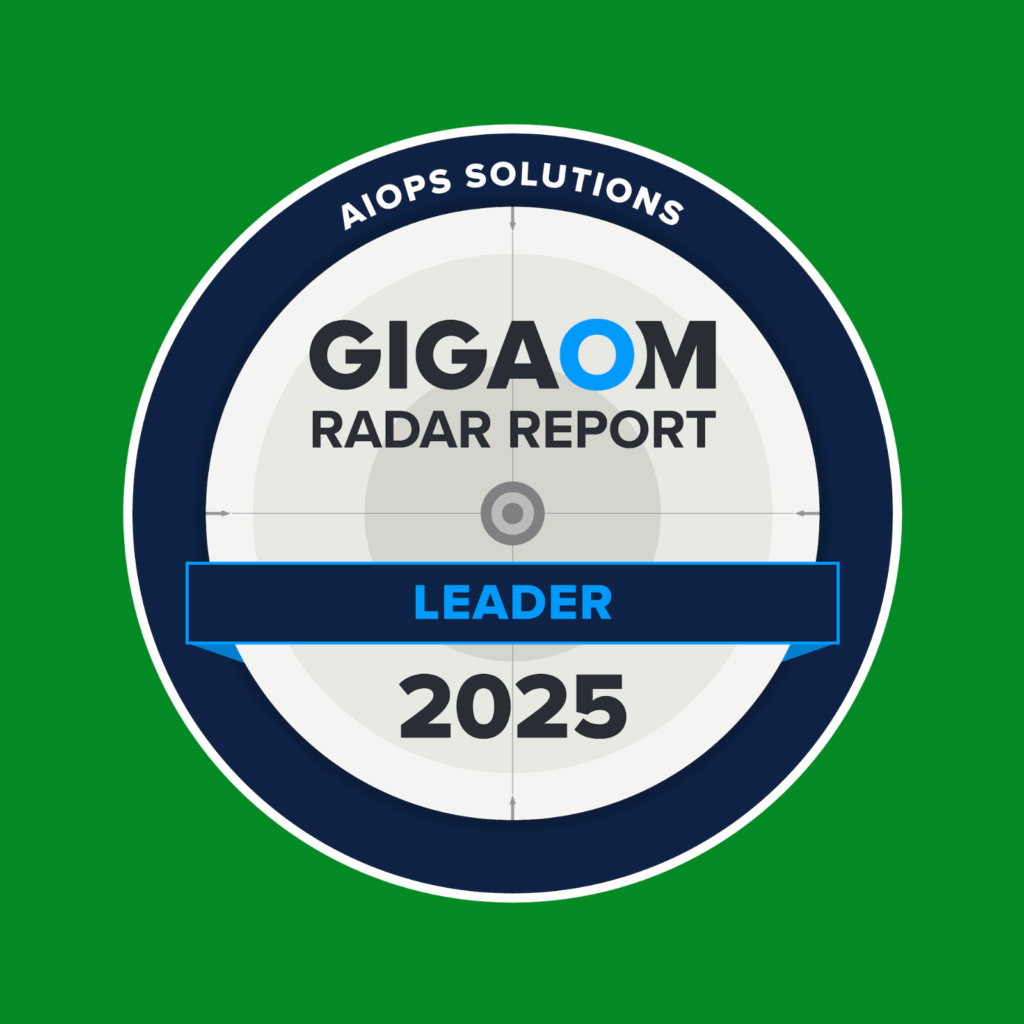- PagerDuty /
- Blog /
- Analyst Reports /
- How the technology you choose influences CloudOps maturity
Blog
How the technology you choose influences CloudOps maturity
As the world becomes increasingly digital-first, it’s more important than ever for organizations to keep services always-on, innovate quickly, and deliver great customer experiences. Uptime is money, so it’s no surprise that many have made the shift to cloud in recent years in order to make use of its flexibility and scale—while controlling costs. And while 2020 wasn’t easy for any organization, those that are thriving have embraced the digital mindset.
However, this shift towards digital poses some key challenges if the technology, processes, and people are not aligned across the organization. Every organization approaches this differently. But what sets companies apart to set them up for long-lasting maturity for their cloud operations (CloudOps) investments?
A recent IDC White Paper, sponsored by PagerDuty, delves into this exact question, with the intent to better understand trends and behaviors of CloudOps organizations and what constitutes success to reach digital operational maturity.
This blog series dives deeper into each of the key findings. The first blog in this series defined the four phases of CloudOps maturity and identified three accelerators that help organizations evolve from “beginner” to “expert” on the CloudOps journey.
This second blog will explore how technology choices can impact and influence the journey to CloudOps maturity. Technology is key to aligning and enabling cloud infrastructure and management with the greater business. Let’s see what trends IDC uncovered when they pulled the 800+ survey responses into cohorts and compared their approaches to technology.
Consolidation and federation can help with visibility across complex systems
As companies shift to the cloud in order to shorten development cycles, to push more code, and to build faster, they also typically observe infrastructure and processes becoming more dynamic and subject to change events. The changes hitting (and testing) the production system are greater in volume and coming from more decentralized teams, which also opens the door to more potential for more untangling required to get to the root cause when things go wrong, as well as more security challenges.
To handle this increased complexity, teams are observed to begin to use more observability tools to gain visibility across hybrid infrastructure and teams. However, using too many tools at once can also make it challenging to manage your cloud operations with complete visibility and a single source of truth. To be successful, organizations should standardize on a CloudOps platform early during this organizational change, using the platform as a key tool in their federation efforts and later in their centralization efforts. Respondents in the Expert cohort displayed a trend for using a single platform for improved observability, orientation, and decision making.
As shown below, 74% of Expert organizations are using a single platform, as opposed to just 18% of Beginners and 24% of Intermediates.

Mature CloudOps organizations display a “hybrid by design” approach
The report showed that mature organizations are overwhelmingly displaying a choice of hybrid infrastructure, which is unlikely to change. CloudOps, like the underlying technology, are a catalyzing force for hybrid and matrix management structures, which present an opportunity for leaders and employees alike to modernize leadership within the organization, and to create a new, more flexible information technology architecture.
Technically, only 24% of CloudOps adopters (BEGINNERs) report that they utilize a hybrid cloud architecture, with 59% saying they have no plans to deploy a hybrid cloud architecture. Meanwhile, 64% of CloudOps innovators (EXPERTs) are already using a hybrid cloud infrastructure for production activities, with an additional 6% using it for testing activities. The remaining ~30% of innovators (EXPERTs), are “cloud-first” companies that have minimal or limited private cloud/bespoke hardware setups.

Rules-based and hybrid approaches persist in face of AI/ML availability
Most Expert level organizations have reached maturity by primarily using rules-based observability tools. Experts are also far less likely to use a hybrid rules-based and AI/ML approach than Beginners. In contrast, Beginner organizations tend to use a combination of both AI/ML and rules-based platforms. In fact, 30% of Beginner organizations indicated they were using a hybrid approach (AI/ML and rules-based) as opposed to only 11% of Expert organizations.
However, this is likely because most Expert organizations began their journey around four to five years ago, when AI and ML had not yet matured. These technologies have developed considerably today. For Beginner organizations, this means they can harness both AI/ML and rules-based tools, adopting a hybrid approach to accelerate their CloudOps maturity journey. Using this combination of best practices could even enable them to become Experts in a shorter time than it took those already at Expert level.
As the industry shifts towards greater availability of more sophisticated AI/ML use cases for incident response and digital operations management, we expect the uptake of AI-first offerings to increase as organizations seek out new ways to help reduce toil for the frontline digital responders.

Don’t forget the cultural investments required for changes to tech and processes
Switching technology platforms alone cannot occur in a vacuum – in order to reach digital operational maturity you also need to transform your processes and culture alongside new technology.
Service ownership is an operational and cultural model where developers own code end-to-end. By bringing developers closer to their code and the customers, you’re creating tighter feedback loops and with ownership and accountability, empowering faster innovation. By defining your entire service hierarchy by relating technical services to business impact you ensure all systems have clear ownership which helps streamline the incident response process.
With service ownership in place, you can engage the right responder right away when things break, which can help improve incident response and reduce MTTR. The report showed that implementing full-service ownership is a hallmark of CloudOps maturity, with 60% of Expert organizations indicating they had a service ownership model compared to 29% of Advanced and just 8% of Beginners.
As mentioned in the first blog, introducing new tools or processes without organization-wide agreement can lead to siloed teams and a tool stack that’s not integrated for the entire organization.
Next up: Streamlining processes for CloudOps maturity
In the next blog post of this series, I’ll look at the role that organizations’ processes play in reaching CloudOps maturity. To read in full, download the IDC White Paper, “Cloud Operations Maturity Assessment, 2021: Key Attributes and Behaviors that Differentiate Beginners from Experts.”
** IDC White Paper, sponsored by PagerDuty, Cloud Operations Maturity Assessment, 2021: Key Attributes and Behaviors that Differentiate Beginners from Experts, 2021, Doc. #US47638121, June 2021.


